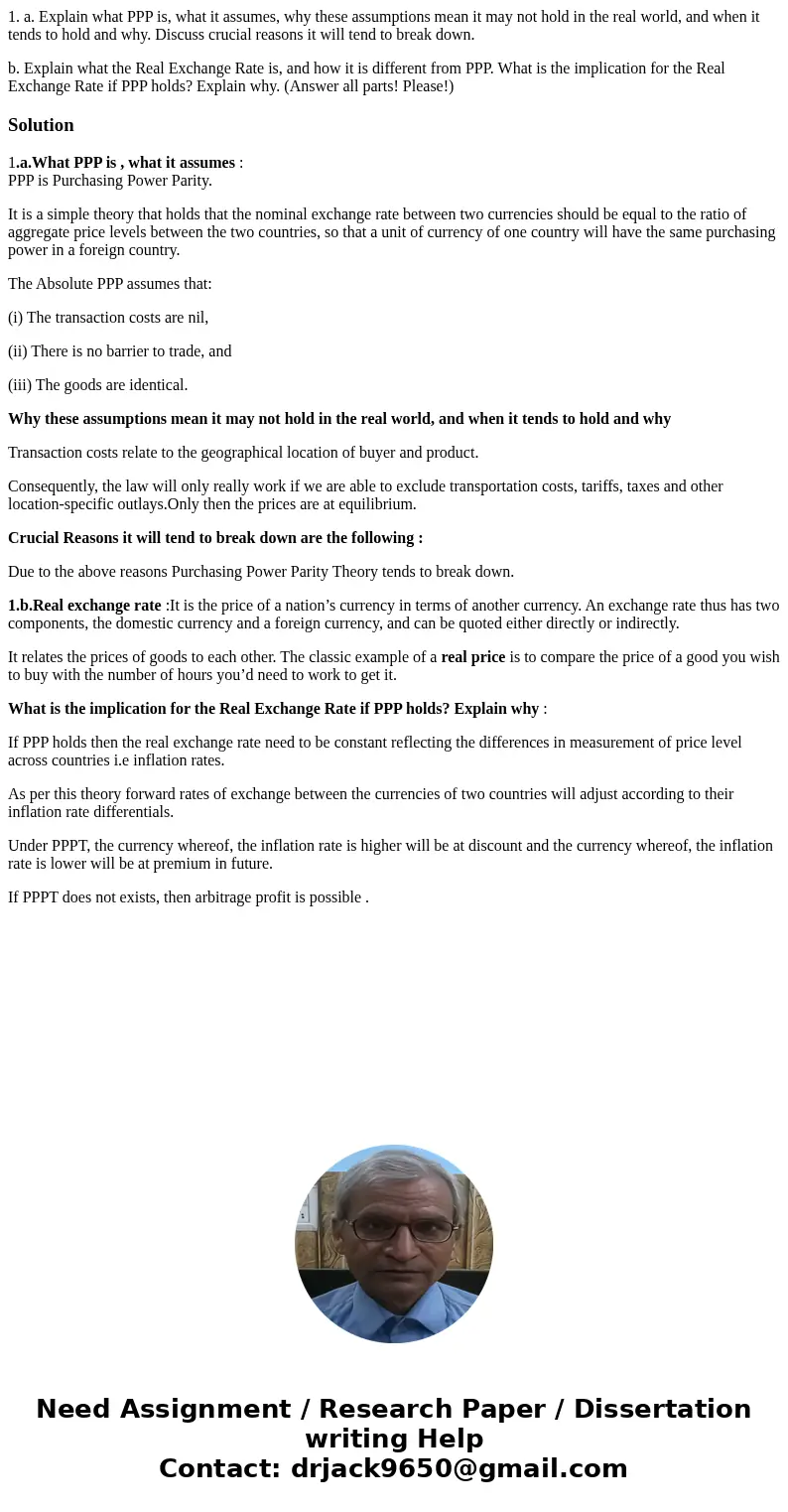1 a Explain what PPP is what it assumes why these assumption
1. a. Explain what PPP is, what it assumes, why these assumptions mean it may not hold in the real world, and when it tends to hold and why. Discuss crucial reasons it will tend to break down.
b. Explain what the Real Exchange Rate is, and how it is different from PPP. What is the implication for the Real Exchange Rate if PPP holds? Explain why. (Answer all parts! Please!)
Solution
1.a.What PPP is , what it assumes :
PPP is Purchasing Power Parity.
It is a simple theory that holds that the nominal exchange rate between two currencies should be equal to the ratio of aggregate price levels between the two countries, so that a unit of currency of one country will have the same purchasing power in a foreign country.
The Absolute PPP assumes that:
(i) The transaction costs are nil,
(ii) There is no barrier to trade, and
(iii) The goods are identical.
Why these assumptions mean it may not hold in the real world, and when it tends to hold and why
Transaction costs relate to the geographical location of buyer and product.
Consequently, the law will only really work if we are able to exclude transportation costs, tariffs, taxes and other location-specific outlays.Only then the prices are at equilibrium.
Crucial Reasons it will tend to break down are the following :
Due to the above reasons Purchasing Power Parity Theory tends to break down.
1.b.Real exchange rate :It is the price of a nation’s currency in terms of another currency. An exchange rate thus has two components, the domestic currency and a foreign currency, and can be quoted either directly or indirectly.
It relates the prices of goods to each other. The classic example of a real price is to compare the price of a good you wish to buy with the number of hours you’d need to work to get it.
What is the implication for the Real Exchange Rate if PPP holds? Explain why :
If PPP holds then the real exchange rate need to be constant reflecting the differences in measurement of price level across countries i.e inflation rates.
As per this theory forward rates of exchange between the currencies of two countries will adjust according to their inflation rate differentials.
Under PPPT, the currency whereof, the inflation rate is higher will be at discount and the currency whereof, the inflation rate is lower will be at premium in future.
If PPPT does not exists, then arbitrage profit is possible .

 Homework Sourse
Homework Sourse